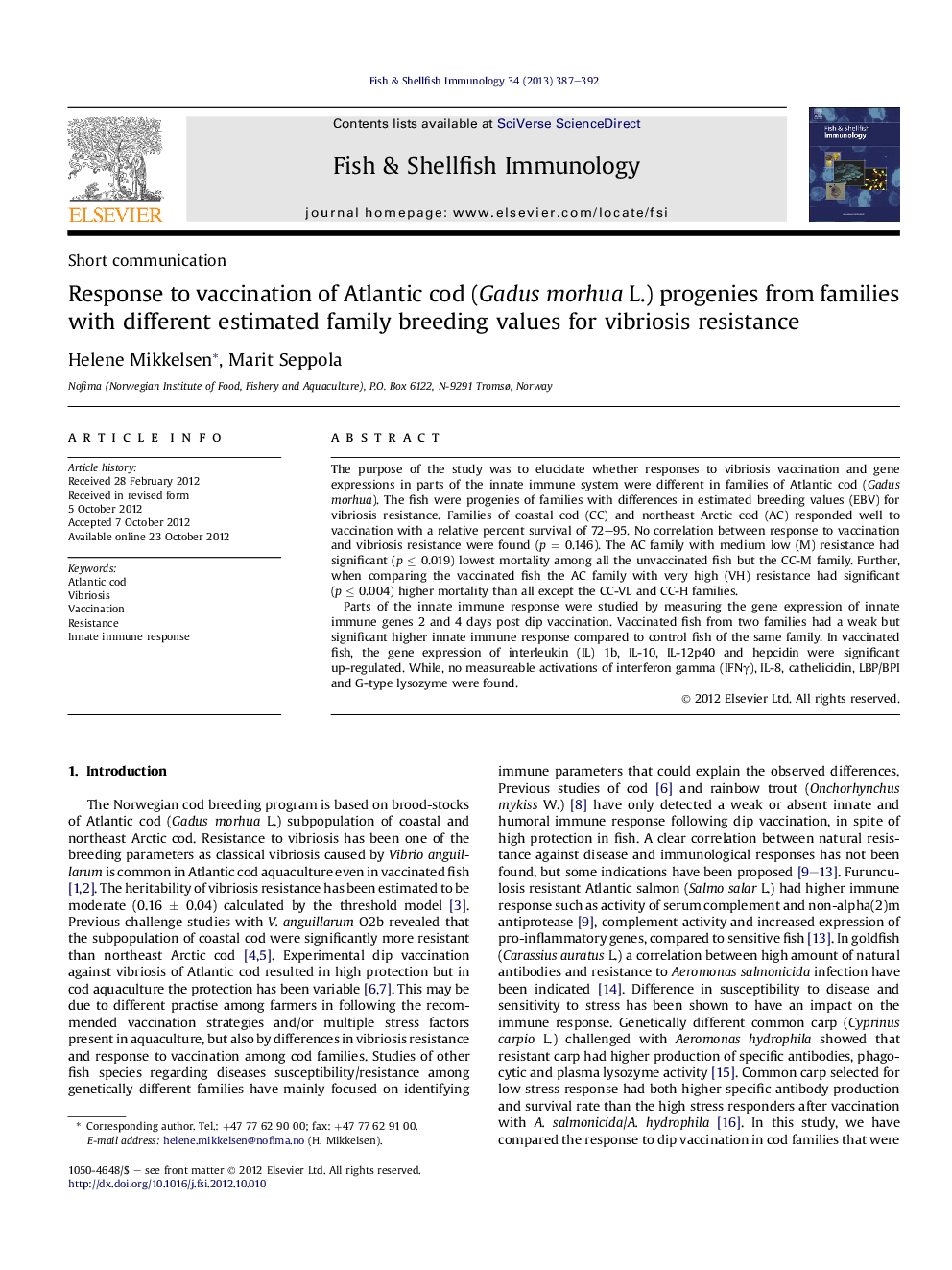| Article ID | Journal | Published Year | Pages | File Type |
|---|---|---|---|---|
| 2432298 | Fish & Shellfish Immunology | 2013 | 6 Pages |
The purpose of the study was to elucidate whether responses to vibriosis vaccination and gene expressions in parts of the innate immune system were different in families of Atlantic cod (Gadus morhua). The fish were progenies of families with differences in estimated breeding values (EBV) for vibriosis resistance. Families of coastal cod (CC) and northeast Arctic cod (AC) responded well to vaccination with a relative percent survival of 72–95. No correlation between response to vaccination and vibriosis resistance were found (p = 0.146). The AC family with medium low (M) resistance had significant (p ≤ 0.019) lowest mortality among all the unvaccinated fish but the CC-M family. Further, when comparing the vaccinated fish the AC family with very high (VH) resistance had significant (p ≤ 0.004) higher mortality than all except the CC-VL and CC-H families.Parts of the innate immune response were studied by measuring the gene expression of innate immune genes 2 and 4 days post dip vaccination. Vaccinated fish from two families had a weak but significant higher innate immune response compared to control fish of the same family. In vaccinated fish, the gene expression of interleukin (IL) 1b, IL-10, IL-12p40 and hepcidin were significant up-regulated. While, no measureable activations of interferon gamma (IFNγ), IL-8, cathelicidin, LBP/BPI and G-type lysozyme were found.
► Progenies of cod families with different estimated vibriosis resistance had high response to vaccination. ► No correlation between vibriosis resistance and response to vaccination. ► Gene expression of IL-1β, IL-10, IL-12p40 and Hep was weakly up-regulated post vaccination. ► No up-regulation of gene encoding IFNγ, IL-8, Cath, LBP/BPI and G-lys in the tested families post vaccination.
